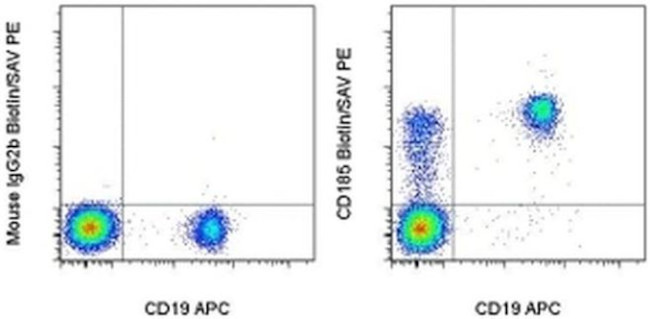Search Thermo Fisher Scientific
Invitrogen
CD185 (CXCR5) Monoclonal Antibody (MU5UBEE), Biotin, eBioscience™
FIGURE: 1 / 15
CD185 (CXCR5) Antibody (13-9185-82) in Flow



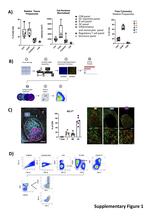
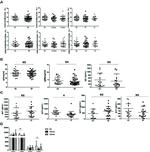

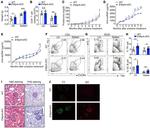
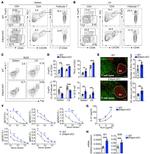
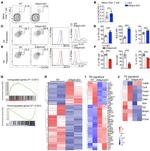
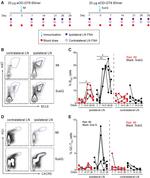
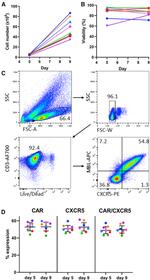
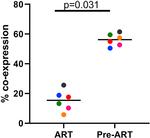
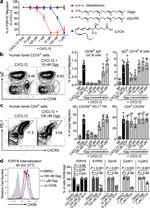
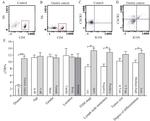
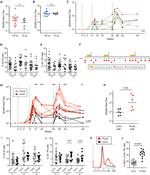
Product Details
13-9185-82
Species Reactivity
Published species
Host/Isotype
Recommended Isotype Control
Class
Type
Clone
Immunogen
Conjugate
Form
Concentration
Purification
Storage buffer
Contains
Storage conditions
Shipping conditions
RRID
Product Specific Information
Description: The MU5UBEE monoclonal antibody reacts with human and non-human primate CD185. CD185, which is also known as C-X-C chemokine receptor 5 (CXCR5) and Burkitt lymphoma receptor 1 (BLR1), is a seven transmembrane G protein-coupled receptor originally identified in Burkitt's lymphoma. In peripheral blood, CD185 is expressed on B cells, CD4+ T cells (but not Th1 or Th2 cells), as well as on a subpopulation of memory (CD45RO+) T cells. Circulating CD185+ T cells are in a resting state and migrate to the lymph nodes due to expression of CCR7 and CD62L. In tonsil, CD185 is expressed on nearly all CD4+ cells together with CD45RO and activation markers such as CD69 and ICOS. Tonsillar CD185+ cells have been shown to induce antibody production when co-cultured with B cells, thus supporting their role in providing help to B cells. Furthermore, this chemokine receptor plays a critical role in lymphocyte trafficking, in particular T cell migration into the B cell follicles of germinal centers in response to CXCL13, making CD185 an established marker of follicular helper T cells.
The MU5UBEE monoclonal antibody also crossreacts with Rhesus macaque.
Applications Reported: This MU5UBEE antibody has been reported for use in flow cytometric analysis.
Applications Tested: This MU5UBEE antibody has been pre-titrated and tested by flow cytometric analysis of normal human peripheral blood cells. This can be used at 5 µL (0.125 µg) per test. A test is defined as the amount (µg) of antibody that will stain a cell sample in a final volume of 100 µL. Cell number should be determined empirically but can range from 10^5 to 10^8 cells/test.
Filtration: 0.2 µm post-manufacturing filtered.
Target Information
CXCR5 (C-X-Chemokine Receptor Type 5, CD185) also known as Burkitt lymphoma receptor 1 (BLR1) belongs to the CXC chemokine receptor family. CXCR5 is a G protein-coupled seven transmembrane receptor for chemokine BLC. CXCR5 gene is specifically expressed in Burkitt's lymphoma and lymphatic tissues, such as follicles in lymph nodes, as well as in spleen. Studies of CXCR5 suggest that it plays an essential role in B cell migration. CXCR5 expression has been reported in human blood and salivary gland and in animal lymphatic organs, blood, bone marrow, brain, liver, lymph node, skin, spleen, stomach, and tonsil. ESTs (expressed sequence tags) have been isolated from human brain, germ cell, lung, lymph, and pancreas. G-protein Coupled Receptors (GPCRs) comprise one of the largest families of signaling molecules with more than a thousand members currently predicted to exist. All GPCRs share a structural motif consisting of seven membrane-spanning helices, and exist in both active and inactive forms. An array of activating ligands participate in the conformation of GPCRs which leads to signaling via G-proteins and downstream effectors. Research studies have also shown the vast series of reactions which participate in the negative regulation of GPCRs. This "turn-off" activity in GPCRs have tremendous implications for the physiological action of the cell, and continues to drive pharmacological research for new drug candidates. Two blockbuster drugs which have been developed as GPCR-targeted pharmaceuticals are Zyprexa (Eli Lilly) and Claritin (Schering-Plough) which are used in mental health and allergy applications, respectively.
For Research Use Only. Not for use in diagnostic procedures. Not for resale without express authorization.
Bioinformatics
Protein Aliases: Blr-1; Burkitt lymphoma receptor 1; Burkitt lymphoma receptor 1, GTP binding protein (chemokine (C-X-C motif) receptor 5); Burkitt lymphoma receptor 1, GTP-binding protein; C Cmotif chemokine; C X C motif chemokine; C-X-C chemokine receptor type 5; CC motif chemokine; CCmotif chemokine; CD185; CD185 antigen; chemokine (C-X-C motif) receptor 5; CXC; CXC motif chemokine; CXC-R5; CXCR-5; GPR9; HUMSTR; MDR-15; Monocyte-derived receptor 15
Gene Aliases: BLR1; CD185; CXCR5; EGK_06966; MDR15
UniProt ID: (Human) P32302
Entrez Gene ID: (Rhesus monkey) 701792, (Human) 643

Performance Guarantee
If an Invitrogen™ antibody doesn't perform as described on our website or datasheet,we'll replace the product at no cost to you, or provide you with a credit for a future purchase.*
Learn more
We're here to help
Get expert recommendations for common problems or connect directly with an on staff expert for technical assistance related to applications, equipment and general product use.
Contact tech support
